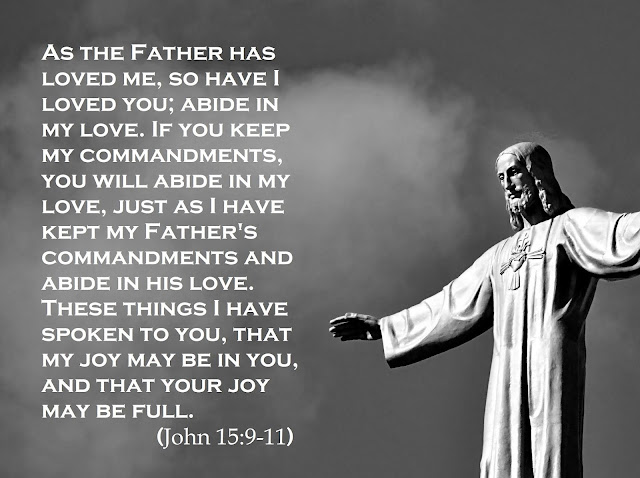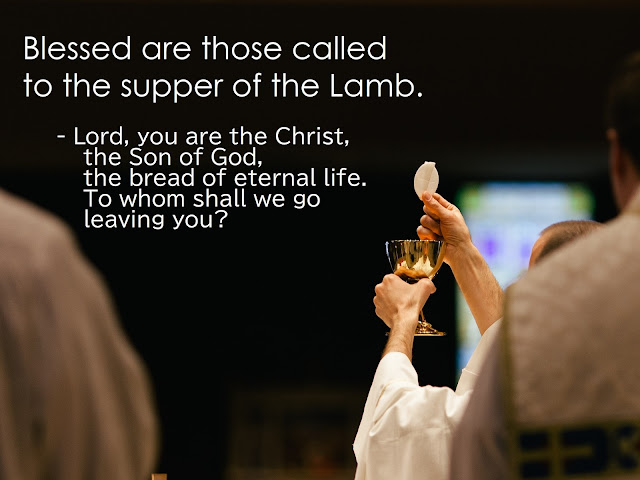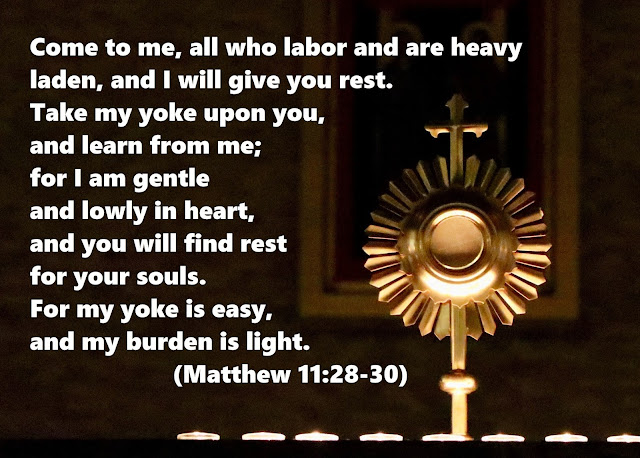The Estuary of Theology 9
Those Who Receive the “Divine Celibacy”
In our last issue, we understood that the community waiting for Pentecost, which is described as that of the new men who succeeded the position of Mary the mother of Jesus and the new women who succeeded the position of Jesus, had the composition and the vocation of the Holy Family. Those who have received the “divine celibacy” were among them including Mary Magdalene. The “divine celibacy” is one of the characteristics of God's individuality, which is God's life, who neither marries nor is given in marriage, and it comes from the fact that though three personas of the triune Godhead, as ones each of whom is "I AM", are united into one through the knowledge of God, each of their individuality remains independent and is not in a relationship of dependence in which they hold each other's individuality.
This freedom, which can be called the “divine celibacy,” is also one of the characteristics of the life which God breathed into humans, namely human free mind. However, not everyone who has the free mind necessarily lives this characteristic in this world. Even among Christians, priests, who produce the Eucharist, hold the Word that has become living by the will of the Holy Spirit in their memory with the intervention of the Holy Spirit as Mary did. Similarly, those who have become father or mother hold the free minds of their children in their memory until they become adult as Joseph did. In both cases, their memory of once having held others never fade. Therefore, it follows that the “divine celibacy” is expressed when Christians who have never held the minds of others undertake the role of Jesus.
Four Gospels describe the women working close to Jesus (cf. Luke 8:1-3). Among them, the main character was Mary Magdalene. The Lord chose her particularly as the one who was to see risen Jesus first and tell it. The word she said to Jesus, “I will take him
away” (John 20:15), without knowing he was Jesus himself in the morning the
Lord had risen can be understood that she undertook the “name of Jesus”
together with his “divine celibacy.” The Gospel describes there was a specific meaning in this conversation.
The following description clearly shows that Jesus and Mary Magdalene were in a teacher-disciple relationship: “Jesus said to her, ‘Mary.’ She turned and said to him in Hebrew, ‘Rab-bo'ni!’ (which means Teacher)” (John 20:16). She must have usually called him like this with veneration as her teacher. Jesus’ word which was told to Mary, “Do not hold me, for I have not yet ascended to the Father.” (John 20:17), meant that no one could receive the “name of Jesus” while he was present on earth with the body.
John the Evangelist stressed that it was Mary Magdalene who was to receive the “name of Jesus” as a role by describing this scene in particular. John, who had been breathed with the breath of the Holy Spirit by risen Jesus after the institution of the Eucharist and also had experienced Pentecost, must have realized that Jesus, in fact, had been preparing the Apostles for the Holy Spirit while he had trained them as disciples. Based on this realization he saw “my church” (Matthew 16:18), which is modelled after the Holy Family, in the composition of the people close to the cross (cf. The Estuary of Theology issue 8). Then he, as the disciple whom Jesus loved, understood through his various experiences with Jesus that the one who had been chosen to succeed the “name of Jesus” was Mary Magdalene.
For John the Evangelist, Mary Magdalene was a very disciple that Jesus had chosen so as to give his own name to “my church.” He needed to write the scene of risen Jesus meeting Mary Magdalene to show this fact so that he could tell the future generations the reason why Mary Magdalene had stood close to the Cross of the Lord as the one who had received the “name of Jesus” as a role from the risen Jesus and had succeeded his name. This is because neither John, who, as an Apostle, took in the mother of Jesus, nor Mary the wife of Clopas (the mother of Clopas) ever receive the “name of Jesus” together with the “divine celibacy” and undertake the role of Jesus on the earth because they have a memory of having held other’s lives.
Jesus often says, “in my name” or “for my name’s sake” in the Gospel. “My name,” that is, the “name of Jesus,” is the name that Mary and Joseph were told by the angels, and it is the Revelation of God. It is important that single members of the Christian communities who have never held other’s free mind receive the “name of Jesus,” which guarantees the “divine celibacy,” as a role publicly and manifest their presence.
In the present Catholic Church, some have the sacrament of Holy Orders and some have the sacrament of matrimony. Priests, who have the sacrament of Holy Orders, already have the role of Mary the mother of Jesus, even without knowing it, and they can undertake the role explicitly. Also, those who have the sacrament of matrimony are capable of undertaking the role of Joseph. However, the position of people who live the role of Jesus receiving the “name of Jesus” does not exist as a recognized position in the present Church. In this situation, considering the discussion so far, it follows that the Church cannot become “my church” with the full members of the people whom the heavenly Father summoned close to the Cross of Jesus.
In today's world, where globally connected communities and organizations on the network have become common, the constant appearance of “my church” as the image of the Holy Family gives the essence of reality to the information-oriented society and makes the world of the Bible real. The relationship between God and the church is the relationship between God the Trinity and “my church,” which is modelled on the Holy Family. “My church,” which has the common heavenly Father with the triune Godhead, welcomes all people into this relationship as the Holy Family welcomed Jesus. For this reason, the Christian community, as “my church,” bears an important role of providing people who visit it with the opportunity to see and experience the Holy Family in it. So, we can understand that this community is faced with the necessity of the formation of itself so that it may have the composition and the vocation of the Holy Family. Particularly, it is urgent to produce people who receive the “name of Jesus” and live the “divine celibacy” into the community.
It is not coincidental that all the women whom the heavenly Father drew close to the cross had the same name, Mary. Since the beloved disciple (the Apostle) took in the mother of Jesus, the three roles of the people near the cross are combined through the same name, Mary. Considering the fact that the Catholic Church declared the Immaculate Conception and the Assumption of Mary, God must desire these two graces Mary has received to become common to people all over the world because these two graces are essential for all people to welcome the Lord at the Second Coming. This will be realized when “my church” receives everything Jesus prepared before the Ascension and hands out all that it received to neighbours for free. God invites every people to receive the bond between the Father and the Son by acknowledging God’s motherhood and to participate in the relationship of God the Trinity by the drawing power of Jesus on the cross combined with that of the Father in heaven and the twofold spirituality of the Holy Spirit (cf. The Estuary of Theology issue 7).
To be continued.
Feb. 2020 in Hiroshima
Maria K




Comments
Post a Comment